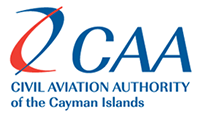Aerodrome and Heliport Certification
The intent of an aerodrome certificate is to convey to aircraft operators that the operator of an aerodrome has agreed to operate and maintain their facility in compliance with accepted international safety standards. The certification process establishes the baseline for continued monitoring by the Civil Aviation Authority and applies to both fixed and rotary wing aircraft aerodromes.
Governing Regulations
Certification Applicability
Certification Requirements
Before a certificate is granted, the CAA must be satisfied that the physical conditions on the maneuvering area, apron and obstacle limitation surfaces of the aerodrome are acceptable and that the scale of equipment and facilities provided are adequate for the flying activities which are expected to take place. The associated design is based on the demands from the maximum or critical aircraft using the facilities.
An Aerodrome certificate is granted to an individual or a company or any other legally constituted authority that satisfies the CAA that the criteria for certificate issue have been met. Once a certificate is granted, the CAA is obliged to satisfy itself that a certificate holder continues to meet certification requirements. An aerodrome certificate is not a saleable asset and cannot be transferred from one person to another.
The Application Process
Documentation
Regulatory Reference Material
- CAACI Audit Policy and Procedure Manual
- ICAO Publications access available through request to CAACI:
- ANNEX 14 Vol 1 Aerodrome Design and Operations;
- ANNEX 14 Vol 2 Heliports;
- Annex 19 Safety Management
- Doc 9774 Manual on Certification of Aerodromes
- Aviation Safety Support International (ASSI) SSI website for Overseas Territories Advisory Circulars with particular reference to:
Aerodromes
| OTAC Part 13-1 | Occurrence Reporting |
| OTAC Part 139-1 | Survey Requirements for Certification of Aerodromes and Approval of IFPs |
| OTAC Part 139-2 | Safety Management Systems |
| OTAC Part 139-4 | Commercial Air Transport & Private Operations |
| OTAC Part 139-3 | Documenting the Safety Management System |
| OTAC Part 139-6 | Wildlife Management |
| OTAC Part 139-7 | Aerodrome Pavement Strength – Overload Operations |
| OTAC Part 139-8 | Aerodrome Emergency Planning and Emergency Exercises |
| OTAC Part 139-9 | Aerodrome Manual |
| OTAC Part 139-10 | Relationship between the Aerodrome Certificate Holder and the Rescue & Fire-Fighting Service (RFFS) |
| OTAC Part 139-11 | Prevention of Runway Incursions |
| OTAC Part 139-13 | Aerodrome Certification and Inspection |
| OTAC Part 139-15 | General Requirements for Aerodrome Certificate |
| OTAC Part 139-16 | Aerodrome Standard Library |
| OTAC Part 139-17 Accountable Manager | |
| OTAC Part 139-20 | Aerodrome Obstacle Survey Information Checks |
| OTAC Part 139-21 | Aerodrome Emergency Planning Modular Exercises |
| OTAC Part 139-22 | Quality Management Systems |
| OTAC Part 139-23 | Runway Pavement Characteristics and Maintenance |
| OTAC Part 139-24 | Safety Assessments (Aeronautical Studies, Safety Cases, Risk Assessments) |
RFFS
| OTAC Part 140-2 | Safety Management Systems |
| OTAC Part 140-3 | Documenting the Safety Management System |
| OTAC Part 140-4 | Relationship between the Aerodrome certificate Holder and the Rescue and Fire-Fighting Service (RFFS) |
| OTAC Part 140-5 | Rescue and Fire-Fighting Management of Extinguishing Agents |
| OTAC Part 140-6 | Rescue and Fire-Fighting Services Resourcing |
| OTAC Part 140-7 | Rescue and Fire-Fighting Services Training and Competence |
| OTAC Part 140-8 | Quality and Management Systems |
| OTAC Part 140-9 | Safety Assessments (Aeronautical Studies, Safety Cases, Risk Assessments) |
Aeronautical Information Services for Aviation
| OTAC Part 175-1 | Aeronautical Information Services |
| OTAC Part 175-2 | Quality Management System |
Aviation Security
| OTAC Part 178-1 | Airport Security Programmes and Security Operating Procedures |
| OTAC Part 178-2 | National X-Ray Competency (NXCT) |
